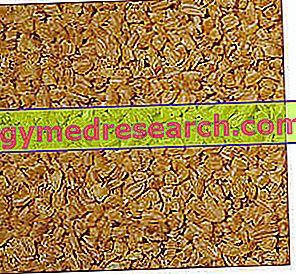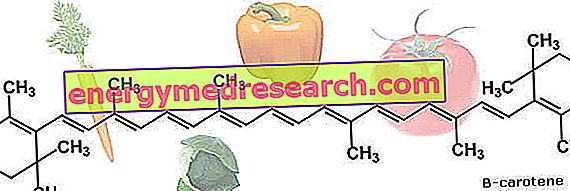What is Bulgur
Bulgur is a cereal product originating in Turkey; more precisely, it is a derivative of the integral and sprouted seeds of a Graminacea belonging to the genus Triticum and to the Specie durum, or durum wheat.

Bulgur, when compared to any kind of wheat flour (both wholegrain and not, both of granulated and 00 type flour), presents a substantial difference: being precooked, it makes use of a greater digestibility also WITHOUT the use of further working processes . On the contrary, simple flours contain some starches, known as resistant, which CANNOT be digested by our intestinal enzymes; for this it is necessary to subject them to an appropriate heat treatment (read the article: viscose fiber); ultimately, reasoning absurdly, eating dry bulgur would be possible to draw energy and other nutrients, while taking raw flours the portion of starch not available could be excessive and trigger abdominal tension, bloating, bloating and diarrhea.
Bulgur VS couscous
Bulgur has many characteristics in common with wheat couscous; both undergo a steaming process, a drying and finally a coarse grinding. However, despite the similarity, bulgur and couscous differ in some details:
- The bulgur is obtained from sprouted seeds, while the couscous from seeds has not sprouted
- The bulgur is ALWAYS made from whole seeds that preserve the bran, while (to date) the couscous is without it
- The bulgur is produced with a coarse crushing of the seed, while the couscous is ground more finely and sieved
- Bulgur is a typical product of Turkey, while couscous is native to Africa.
Today, in Italy it is relatively simple to find the bulgur; it is sold mainly in ethnic food stores and organic food stores, but less in supermarkets. It is curious to note that, on the contrary, in many other countries of the European Community (EC) its presence in large-scale distribution seems to have been consolidated for several years.
Types of bulgur
Applications and differences
There are several "measures" of bulgur, or grains of different thickness; the larger ones are destined for the packaging of the first hot dishes, while the thinner ones are suitable for the production of cold dishes and side dishes.
Among the "special" bulgur there is also a raw one, not sprouted and selected; the advantage of this product, compared to the traditional analogue, is the preservation of the nutritional characteristics until the final cooking which, lasting about 15 minutes, has a negative effect on the food. On the other hand, the traditional bulgur MUST necessarily be softened and rehydrated for about 20-30 minutes, a characteristic which (being "broken" seeds) increases the dilution of some nutrients. Ultimately, the raw bulgur and the cooked bulgur possess different characteristics which however (from the nutritional point of view) do not fully justify the predilection of one or the other type.
NB . During cooking, the raw bulgur tends to absorb more water than the pre-cooked one.
Nutritional characteristics
The composition of bulgur is similar to that of whole wheat or wholemeal flour, with the only difference that in the latter two the NON digestible portion is decidedly greater.
The bulgur brings about 340kcal per 100g of product; it is rich in complex carbohydrates (starch) that make up the vast majority of total energy, while proteins (with a medium biological value) and lipids (unsaturated with an appreciable percentage of essential polyunsaturated fats) represent a marginal portion of total calories.
The bulgur is rich in fiber, even if among these the NOT viscous ones prevail in the caryopsis (less useful in the regulation of the absorption of cholesterol and in the moderation of the glycemic index compared to the VISCOSE). On the other hand, the non-digestible coating contributes to increasing the intake of magnesium, potassium, iron, phosphorus, vitamin B1 (thiamine), vitamin B2 (riboflavin), vitamin PP (niacin) and vitamin E (tocopherols).
The glycemic index of bulgur is NOT low and is equivalent to that of wholemeal bread.
Video Recipes
Bulgur with sautéed vegetables and peppers cream
In this video, our Personal Cooker recipe shows you how to prepare a light bulgur-based first course dish, rich in fiber and also suitable for vegetable and diabetic nutrition.
Bulgur with sautéed vegetables and peppers cream
X Problems with video playback? Reload from YouTube Go to Video Page Go to Video Recipes Section Watch the video on youtubeAll Video Recipes with Bulgur »



